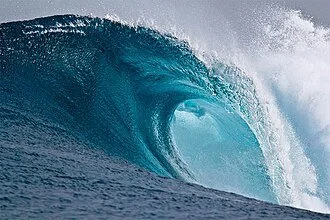So, What Can We Do About Conserving the Ocean?
November 10th, 2025
Can We Still Save The Ocean
The ocean has always been our planet’s beating heart — vast, blue, and endlessly alive. Yet, in the quiet depths, the signs of strain are unmistakable. Human activities have cast long shadows across its surface: rising temperatures, acidic waters, plastic debris, overfished seas, and coastlines reshaped by concrete and steel. From coral reefs fading beneath the sun to mangroves uprooted by expansion, the ocean’s balance has been shaken.
Our impact is both local and global. Coastal cities push ever closer to the tide, dredging channels and disrupting habitats. The hum of ships and offshore drilling echoes through once-tranquil waters. Rain carries the waste of our land — chemicals, oil, and plastic — into the currents. And in distant waters, unregulated fishing is depleting fish stocks faster than they can be replenished.
Yet amid all this, the ocean endures. It absorbs our excess carbon, tempers our climate, and shelters astonishing biodiversity. It still demonstrates resilience. Coral reefs, given time and care, can bloom again after bleaching. Kelp forests can return if their natural predators return. Nature, when allowed to breathe, remembers how to heal.
But hope alone will not save the sea. Healing demands unity —our local, national, and global communities choosing to act together with purpose and compassion. Reducing emissions, protecting coastal habitats, and rethinking how we harvest from the ocean are not acts of sacrifice, but of justice. Ocean justice means ensuring that coastal and Indigenous communities, who have long lived in harmony with the sea, lead the way forward.
This is our moment to imagine something greater: a new story for the ocean and for ourselves — one written in balance, care, and courage. The tide can turn. The ocean can recover. And if we rise together, we can create a future where both humanity and the blue heart of our world thrive once again
The Ocean’s Question
What can we really do to conserve the ocean?
The answer isn’t one-size-fits-all—it depends on where you are along the continuum, from climate denier to fully committed ocean guardian.
And as we confront this question, we must acknowledge the emotional currents that swirl beneath it: climate anxiety, eco-guilt, and even a quiet sense of despair. These feelings are real—but they can also become powerful motivators for change.
1. The Spectrum of Awareness
Not everyone starts from the same place.
At one end of the spectrum are the skeptics—those who struggle to see the ocean’s health as connected to their daily choices. At the other end are the devoted, people who’ve reshaped their lives around protecting our blue planet.
Most of us drift somewhere in between. We care deeply, but the scale of the crisis feels overwhelming. We might recycle, share a post, or sign a petition—small gestures that matter, yet often feel inadequate.
But recognizing that continuum is empowering. Conservation isn’t about perfection. It’s about progress. Each step forward, however small, strengthens the tide of collective action.
Americans Are Waking Up to a Warming World
Recent polls from Yale’s Program on Climate Change Communication and Gallup show that most Americans now recognize global warming as real — and personal. Nearly 70% believe it’s happening, with believers outnumbering skeptics more than five to one.
About six in ten understand that human activities are the main driver, and a majority — roughly 63% in 2025 — say the effects are already underway. Concern is rising, too: about two-thirds of Americans report being at least somewhat worried.
Politics still shapes perception. In 2024, belief in global warming reached 87% among Democrats, 77% of Independents, and 54% of Republicans. Yet across the spectrum, more people are acknowledging that climate change isn’t tomorrow’s problem — it’s today’s challenge.



